All products featured are independently chosen by us. However, SoundGuys may receive a commission on orders placed through its retail links. See our ethics statement.
The best workout headphones
If you are looking for headphones for running and working out in a variety of environments, we’ve tested all the best options.
November 6, 2025
Chase is the Managing Editor at SoundGuys, where he oversees content related to headphones, earbuds, speakers, and all things audio. As a founder of the non profit organization Music For Mental Health, Chase is also passionate in uncovering the ways music creation and listening can serve individuals and the community. You can find music he produces by searching his name on Spotify, Apple Music, and all other streaming platforms. Chase studied Commerce and Applied Music Technology at the University of British Columbia in Vancouver, Canada.
If you’ve ever tried running with your favorite over-ear headphones, you’ve probably learned the hard way that not all audio gear is made for movement. Workout headphones need to do more than just sound good — they have to stay in place through burpees, survive buckets of sweat, and deliver enough punch to keep you pushing through that last set. In our testing, the best options combine secure fit, reliable wireless performance, and durability with sound profiles that keep your energy high without sacrificing clarity. Whether you prefer bass-heavy beats or a more balanced sound for your morning jog, the right pair can make a huge difference in your motivation and focus.
We’ve put dozens of headphones through our lab tests and sweaty workout sessions to find the ones that actually perform where it counts. That means checking real-world comfort over long training sessions, measuring battery life against manufacturer claims, and pushing water resistance ratings to their limits. So lace up your sneakers, grab your playlist, and let’s find the headphones that can keep up with you.
If you are looking for a more portable listening experience, make sure to check out our list of the best workout earbuds.
Compare table
Filter
- Compare tableProductVotes
- 9 total votes9 total votes
$130
8.0
7.5
6.1
8.4
8.3
7.3
9.5
8.5
- 13 total votes13 total votes
$300
8.0
8.0
7.6
9.0
8.0
8.5
7.8
7.0
- 11 total votes11 total votes
$429
7.9
6.9
6.5
7.9
9.0
8.5
9.5
7.5
- 3 total votes3 total votes
$387
7.9
6.7
9.8
8.4
8.8
8.4
8.0
7.5
- 24 total votes24 total votes
$80
7.9
6.7
7.2
9.5
8.5
8.1
8.8
7.7
- 8 total votes8 total votes
$269
7.8
7.0
7.6
7.0
8.0
8.3
9.8
7.0
- 7 total votes7 total votes
$499
7.8
7.8
6.8
6.0
8.5
8.8
8.8
7.0
- 14 total votes14 total votes
$428
7.8
7.0
7.6
6.5
8.0
8.7
9.5
7.0
- 6 total votes6 total votes
$450
7.7
8.0
6.8
8.0
8.0
8.7
7.3
7.0
- 6 total votes6 total votes
$218
7.6
6.9
7.0
8.5
9.0
8.0
7.8
7.5
- 34 total votes34 total votes
$200
7.6
6.9
7.6
7.7
9.0
8.4
7.5
7.5
- 3 total votes3 total votes
$278
7.5
6.9
7.3
8.2
8.5
7.7
7.5
7.4
Product chart
In the chart above, you can see how each of the headphones compares in terms of price and performance.
To gather information about how well each of the earbuds and headphones work, we subject each product to a number of objective tests. We use a Bruel & Kjaer 5128 acoustic measurement system to test headphones and earbuds in our SoundGuys lab. The ear canal of the artificial head was created by averaging and smoothing 3D models of individual ear canal features from the MRI scans of 40 different people.
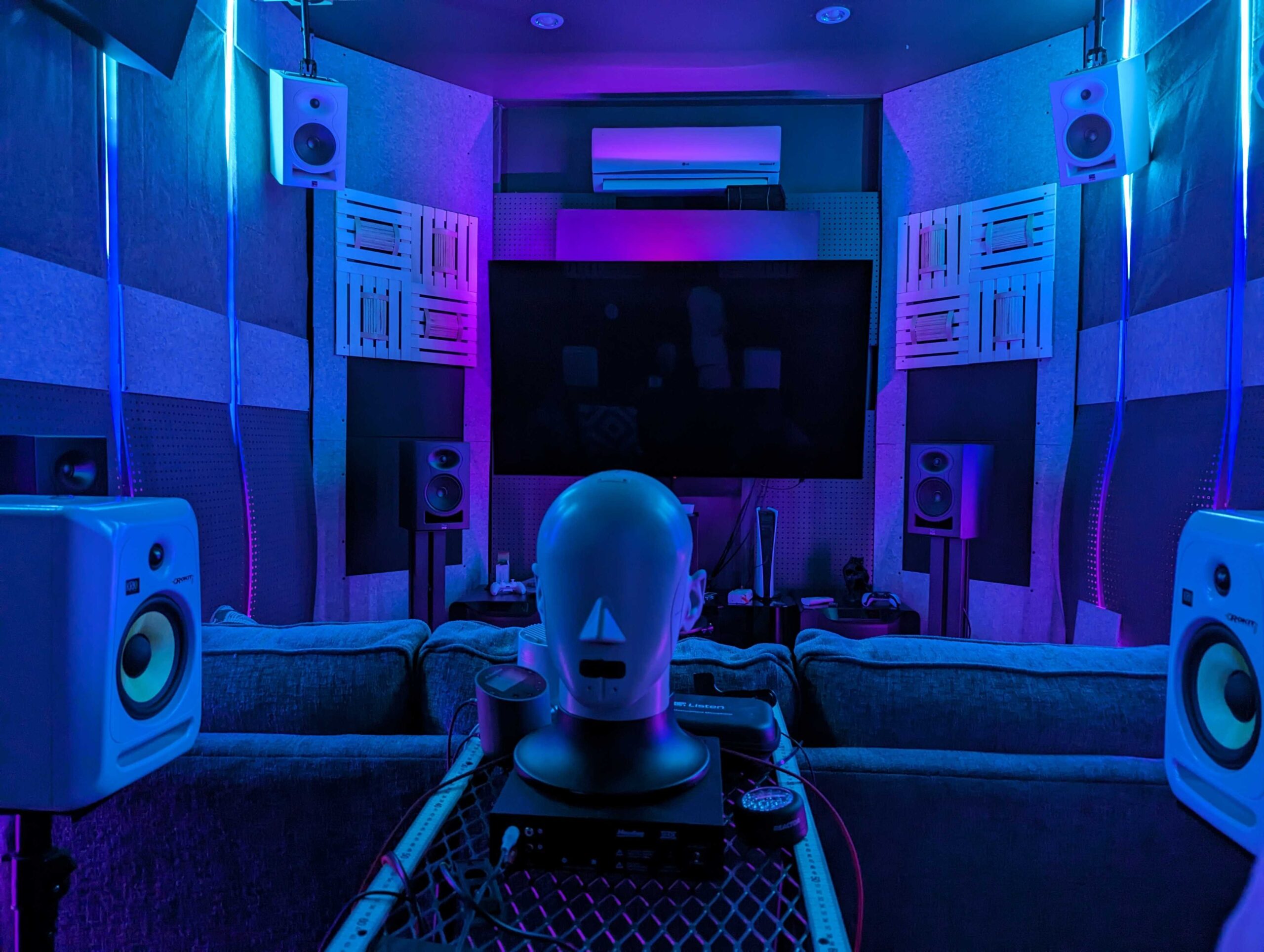
We perform the following testing to determine the best headphones and best earbuds:
- We run sequences to determine the best fit of the headphones, and if there are any manufacturing issues with the product.
- We measure the headphones’ performance and compare the frequency response to our industry-validated SoundGuys Headphone Preference Curve to give context to readers.
- To rate sound quality, we use the Multi-Dimensional Audio Quality Scores (MDAQS) algorithm from HEAD acoustics. These are virtual mean opinion scores as calculated by a powerful machine learning model based on the input of real listeners.
- We play several samples of shaped noise over loudspeakers to test noise canceling and record with our artificial head. We take samples with ANC on, ANC off, and with the headphones off the head. After subtracting the appropriate curves from each other, we can see how well the headphones block out noise.
- To evaluate microphone quality, we play pre-recorded spoken Harvard sentences from a calibrated artificial mouth in our test chamber, either with or without simulated background noises, simulated reverberant spaces, or artificial wind.
- To measure battery life, we play back music through the headphones or earbuds peaking at 75dB(SPL), a safe and realistic listening level.
In addition to objective testing, our team of audio experts uses each of the headphones and earbuds to evaluate the experience of using the product. By wearing the headphones in day-to-day use, we evaluate the comfort, noting any pain points. We also make sure to try out each of the features that the headphones have to offer, such as using the equalizer in the companion app.
Using a combination of subjective and objective testing, we score each product. To learn more about how we evaluate headphones and earbuds, check out our in-depth explainer on how we test.
As with any kind of headphones, there are a few things you should keep in mind when perusing your next pair of workout headphones. We’ve broken down the key points for you; think of it as a cheat sheet of sorts.
The bulk of the cost goes to durability
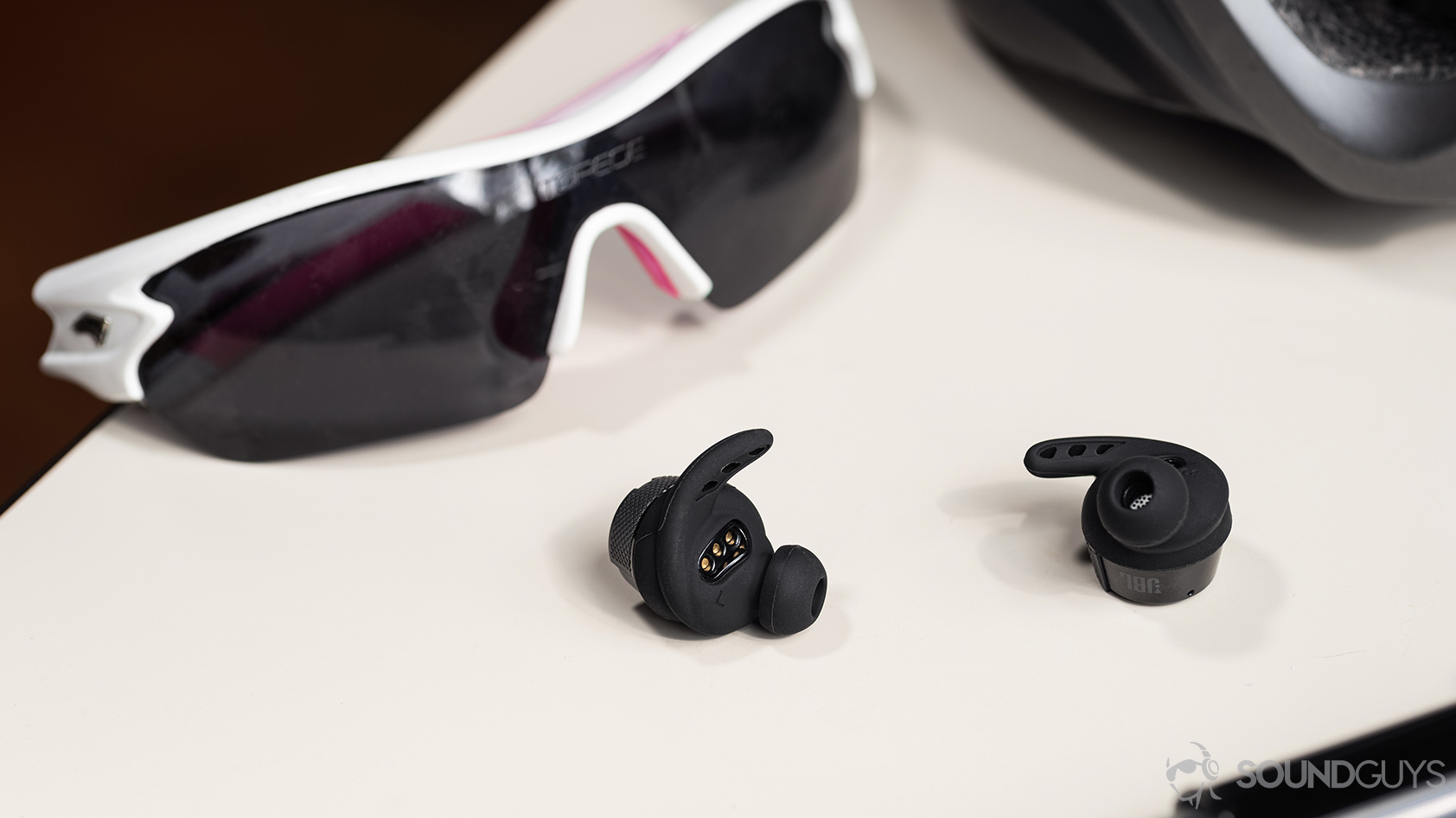
Workout headsets withstand a lot of wear and tear, and that’s okay. You may be wondering why you should pay for something you’re just going to destroy, and well, if you buy the right set of workout headphones for you, you won’t break it (at least not immediately).
Most workout headsets include durability features like flexible, robust headbands, replaceable ear pads, and even the occasional modular design. You pay a premium for this thoughtfulness, and it extends the life of your product.
Comfort, fit, and isolation are all important
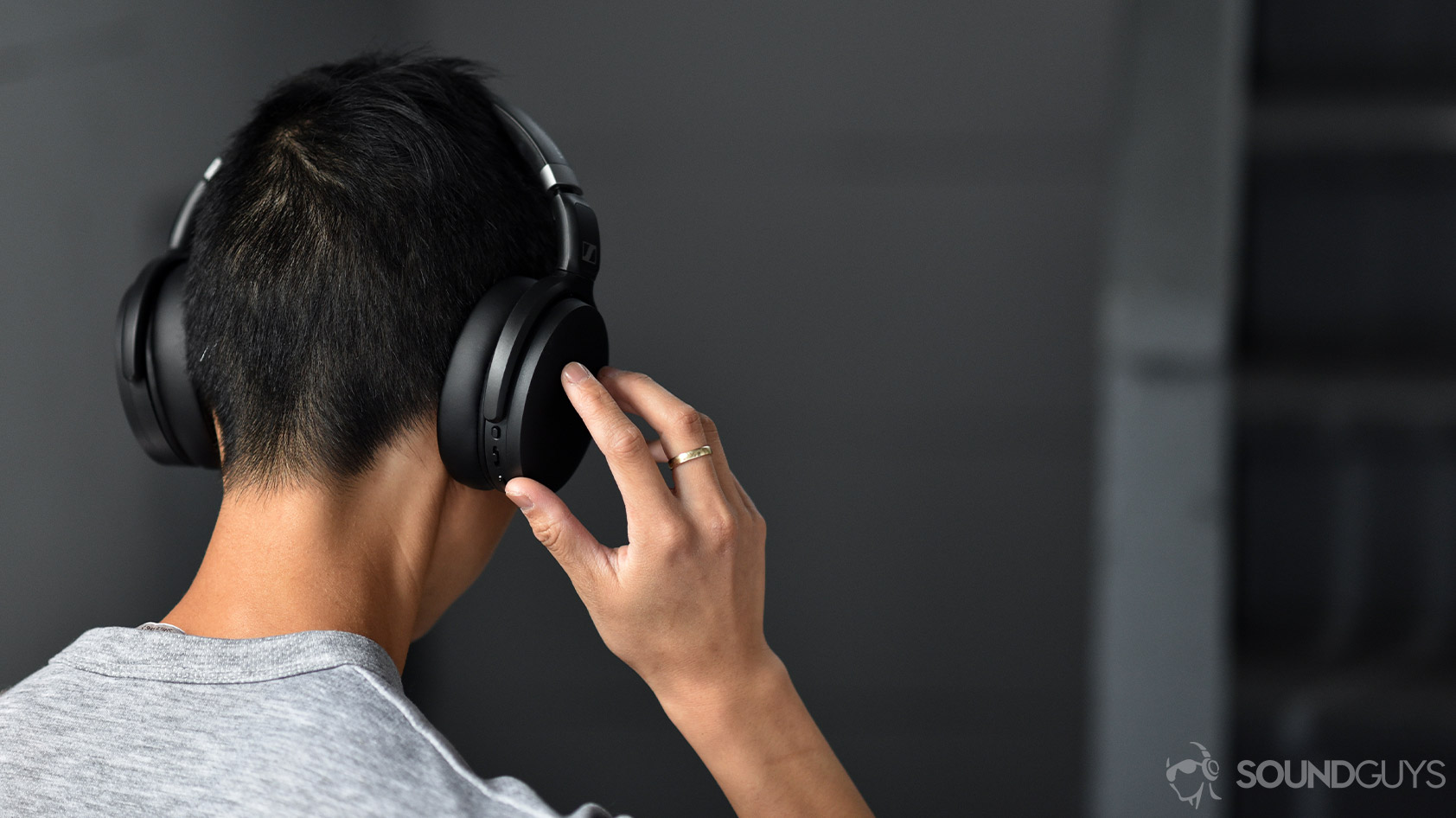
As is the case with almost every pair of headphones, a good fit is essential for keeping the bad sounds out and the good sounds in. Outside noise can really get in the way of a good listening experience because of auditory masking, which is the natural way that your brain perceives sound. That’s especially true when it comes to on-ear headphones since they don’t completely surround your ears. This kind of design leaves a lot of room (literally) for outside noise to make its way down your ear canals.
But isolation aside, what’s arguably more important is how well the headphones fit. Who cares how good they sound if they keep falling off your head? You’ll want a pair of headphones that find a nice balance between clamping force and comfort, so they won’t fall off during a workout, and they also won’t hurt your ears while you wear them.
What is an IP rating?
If you’re going to be working out, chances are you’re going to be sweating; as we all know, water and electronics don’t mix. The best workout headphones feature some kind of water-resistant certification, denoted by an IP rating.
How much does battery life matter?
If you’re going for a wireless pair of workout headphones, one thing to keep in mind is battery life. The last thing you want is to show up at the gym all hyped up and ready to exercise, only to find you forgot to charge your headphones, and you’re going to be without music. Sure, most people don’t exercise for more than 90 minutes at a time (which most true wireless earbuds can easily handle), but a bigger capacity means you can go a few days without charging.
Noise-induced hearing loss is a real problem
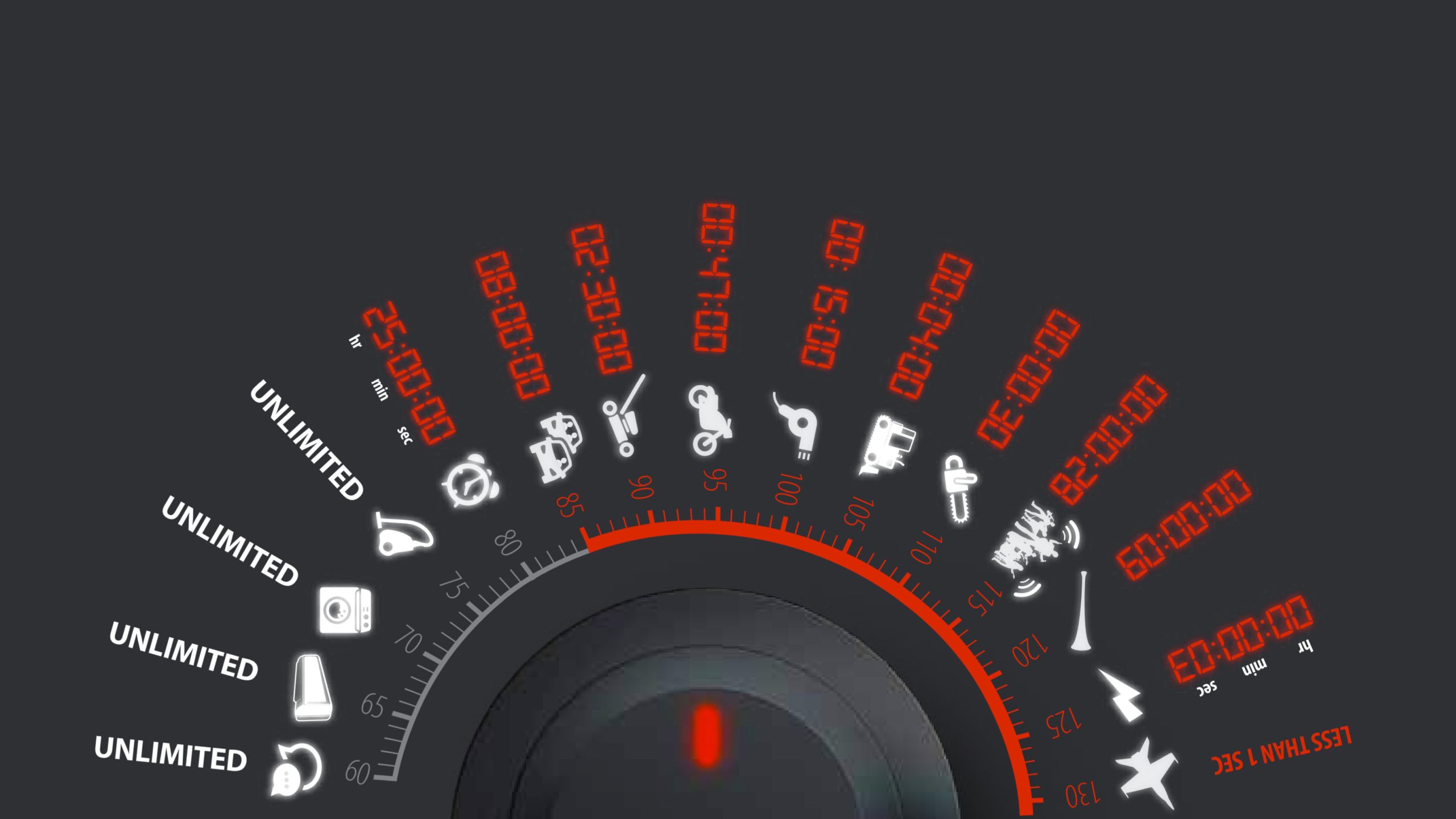
It’s hard to argue that the louder your music is, the easier it is to get pumped up. A higher volume usually helps you feel the bass more. Plus, you probably want to block out the sounds of weights being dropped and the pop music they play at the gym anyway by blasting your headphones. That’s not a good idea.
Noise-induced hearing loss is a real thing, and it sucks. If you consistently play your music too loudly, you can damage the cochlea cells in your inner ear over time. As a general rule of thumb, you probably shouldn’t play your music any louder than 85 dB. If you’re at or around 85dB and still can’t hear your music properly, you might have a bad fit. Definitely adjust the headphones and pads before you go putting your phone on maximum volume.

Here at SoundGuys, we’ve been testing audio products for over a decade. Our team comprises audio product experts who have tested hundreds of different headphones, earbuds, and speakers. Moreover, our team comes from diverse backgrounds and a wealth of expertise, including audio engineering, film production, journalism, podcasting, music production, and even touring musicians.
Everything we recommend results from our objective measurements and great subjective experiences. Ultimately, we want you to enjoy your purchase or, at the very least, leave our site with a little more knowledge about the inner workings of audio. To see why you can trust us with your purchase decision, make sure to check out our ethics policy.
Poll
How much are you willing to spend on good headphones?
Best overall pick: Nothing Headphone (1)

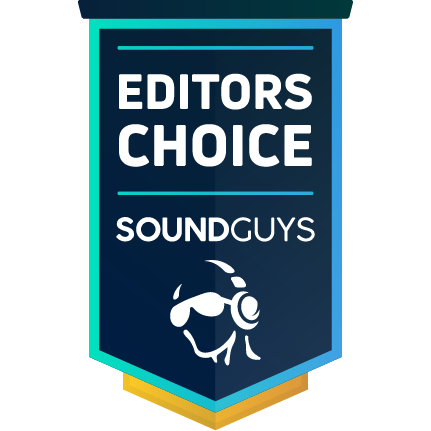
Nothing Headphone (1) earns our Best overall pick thanks to a distinctive blend of practical features and performance that suit everyday use. The headphones include an IP52 rating for water and dust resistance and a tactile control system that we found intuitive for long sessions. Battery life is a standout in the report, lasting nearly 43 hours with ANC on, and the Nothing X app offers an 8-band equalizer and presets to tailor sound. Connectivity is robust too, with Bluetooth 5.3, dual-device pairing, LDAC support, and both Google Fast Pair and Microsoft Swift Pair for fast setup. The Headphone (1) also earned recognition as Best Over-Ear Headphones and for Bluetooth 5.0 and more, reflecting its combination of features and usability.
Sourced from Nothing Headphone (1) review: Something different – SoundGuys.
Best sound quality pick: Heavys H1H


Heavys H1H is our pick for Best sound quality, built around an 8-driver design that delivers notable low-end punch and clear separation for dense mixes. The review highlights how distorted guitars, punchy kick drums, and layered synths retain clarity and definition, and the headphones remain comfortable despite their large size. The H1H offers Hellblocker ANC and a transparent mode, plus aptX adaptive and multiple wired options, so the sound remains detailed across connection types. We also reference our MDAQS assessment, which rated the Heavys highly (an overall 4.9) thanks to strong timbre and immersiveness scores. All of that makes the H1H well suited to listeners who prioritize musical detail, especially for heavy music genres.
Sourced from Heavys H1H review: The best headphones for heavy metal?.
Best for Android users pick: Bose QuietComfort Ultra
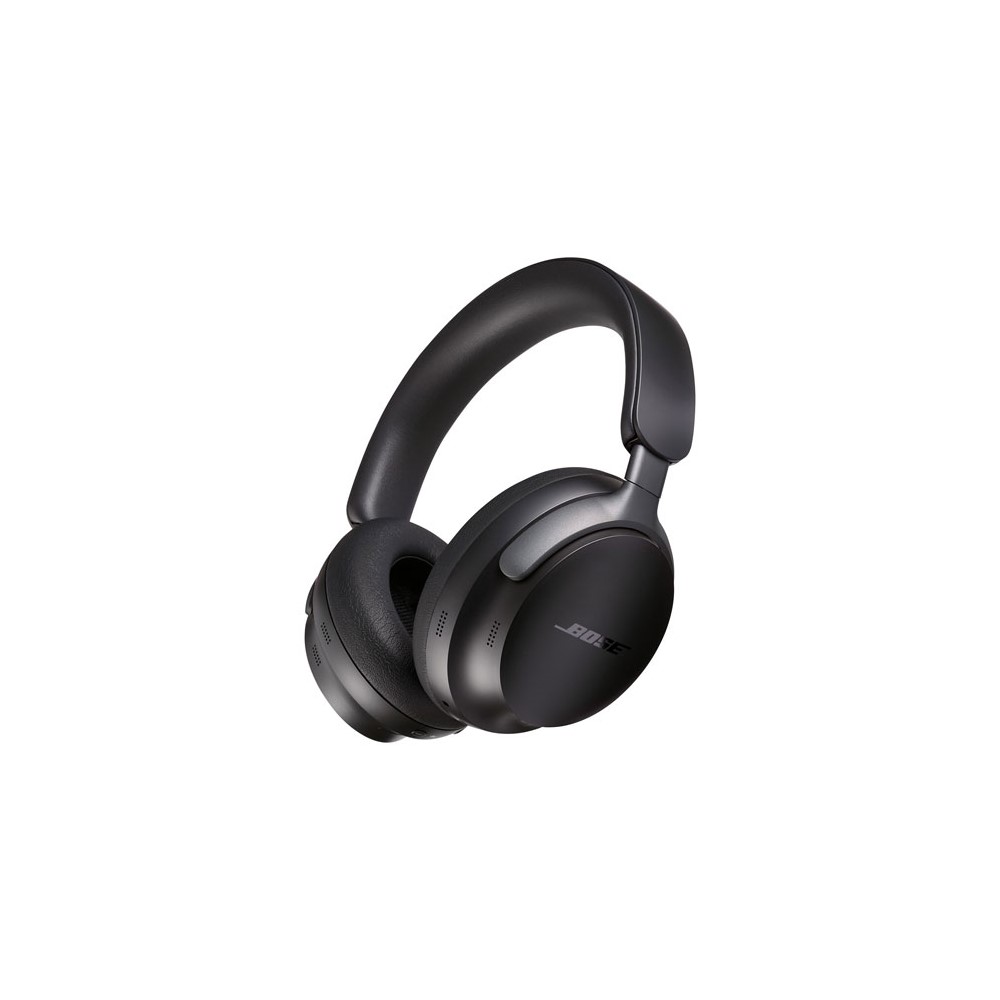

Bose QuietComfort Ultra is our Best for Android users pick because it supports aptX Lossless and Snapdragon Sound on compatible Android phones and includes Bluetooth 5.3 for modern connectivity. The headphones pair that codec support with a straightforward control scheme and the Bose Music app for EQ, immersive settings, and firmware updates. Comfort is also a strong point: wide ear cups, soft padding, and a lightweight 253g build make them easy to wear for long stretches, and they include a carrying case with space for cables. Bose’s ANC performs very well in testing, giving strong isolation that reduces common travel noises substantially. We note that the QuietComfort Ultra also earned recognition for Best for Comfort, reflecting how fit and padding are central to the design.
Sourced from Bose QuietComfort Ultra Headphones review – SoundGuys.
Best ANC pick: Apple AirPods Max


Apple AirPods Max takes our Best ANC pick for its top-tier noise canceling and effective transparency mode, which together handle low-frequency cabin and HVAC noise very well. The AirPods Max pairs that ANC with features that fit tightly into the Apple ecosystem, like the H1 chip, automatic pausing, and spatial audio on iOS devices. The build leans heavy—stainless steel and aluminum contribute to a 385g weight—but the headband design distributes that mass so many users still find them comfortable for extended listening. Controls are handled via a precise digital crown, and the ear cups are deep and replaceable for long-term maintenance. The AirPods Max also earned a badge for Best for iPhone users, underscoring how Apple-specific features strengthen the package for iOS owners.
Sourced from Apple AirPods Max review – SoundGuys.
Best value pick: JLab JBuds Lux ANC


JLab JBuds Lux ANC is our Best value pick because it delivers a full feature set and solid battery life for budget-minded buyers. The headphones fold compactly for travel, include an app with a 10-band EQ, and support USB-C wired playback if you prefer a wired source. In battery testing they lasted 44 hours and 22 minutes, and the set also supports fast charging that yields about four hours of listening from a 10-minute charge. ANC performance is decent for commuting, with better high-frequency isolation and modest low-frequency cancellation that’s acceptable at this price point. We also highlight that the JBuds Lux ANC earned recognition for Best Battery Life, which aligns with the long runtime noted in testing.
Sourced from JLab JBuds Lux ANC review – SoundGuys.
Best call quality pick: Sony WH-1000XM5


Sony WH-1000XM5 is our Best call quality pick thanks to an eight-microphone array and AI noise rejection that improve voice clarity in calls. The WH-1000XM5 is positioned as an all-rounder for commuters and travelers, with comfortable padding and features accessed via the Sony Sound Connect app. Battery life in our test reached about 31 hours with ANC on, and the app enables ANC optimization, a custom equalizer, and spatial audio options for power users. Controls include both capacitive touch and hardware buttons to manage ANC and playback. This combination of call-focused hardware and versatile features makes the WH-1000XM5 a reliable choice for remote work and meetings.
Sourced from Sony WH-1000XM5 review – SoundGuys.
Our verdict
Across this group of wireless headphones, we recommend the Nothing Headphone (1) as the best all-around pick for people who want a mix of features—IP52 rating, long battery life, solid ANC, and a deep app EQ—while the Heavys H1H is the choice for listeners chasing the most detailed sound and a high MDAQS rating. For Android users who want tight codec and platform support, the Bose QuietComfort Ultra is the strongest match, and iPhone users who prioritize top-tier ANC will find the AirPods Max compelling. Budget-conscious buyers should look at the JLab JBuds Lux ANC for excellent battery life and value, while those needing the clearest voice calls should consider the Sony WH-1000XM5 for its microphone array and AI noise rejection.
If you’re still deciding, note that the Sony WH-1000XM6 remains an unselected model in this list; it’s positioned as a refined all-rounder for commuters and travelers with fixes over prior models, broad feature support via its app, and typical Sony comfort and software options, but it lacks an IP rating and may be more finicky about fit for some users.
FAQ
Not usually. They’re heavier and can trap heat during intense activity. Wireless earbuds or bone-conduction headphones are generally better suited for workouts.
The “IP” in IP ratings stands for ingress protection. You’ll see this rating formatted as IPXX; a common rating is IPX4. The “X” in IPX4 is a placeholder for dust resistance, and the “4” denotes a certain degree of water resistance. All workout earbuds need to be water-resistant. You can’t submerge a headset unless it has an IPX7 rating or higher.
Here’s a quick rundown of ingress protection (IP) ratings. The X is just a placeholder for a dust resistance rating.
There are a few factors to consider when looking for headphones to bring to the gym. The first thing to consider is what kind of headset you actually want. Do you want wired or wireless? Over-ear headphones or wireless earbuds? Everyone has their own preferences, but in this list, we’re going to be going over the best over-ear and on-ear headphones for working out. If you prefer earbuds, don’t worry; we have you covered there too.
Now that we’ve narrowed that down, some other important factors you should keep in mind are cost, sweat resistance, comfort and fit, durability, and battery life.
Over-ear headphones are generally better for working out at the gym. The over-ear design allows for better noise isolation to block out ambient gym noise. Over-ear models also tend to have better battery life than on-ear styles. The bigger earcups and headband design provide a more secure and stable fit during exercise.
For most workout situations, earbuds are better than headphones. Earbuds are more compact, lightweight, and portable for carrying to the gym. Their secure fit doesn't get jostled as much during intense exercise. Earbuds also allow you to hear some ambient sounds for awareness of your surroundings. However, over-ear headphones provide better sound quality and noise isolation if those are priorities. See our list of the best workout earbuds.
Yes. Many workout headphones have built-in mics for calls and voice assistants. If call quality matters, look for models with dual-mic noise reduction so background noise doesn’t overwhelm your voice.
Thank you for being part of our community. Read our Comment Policy before posting.